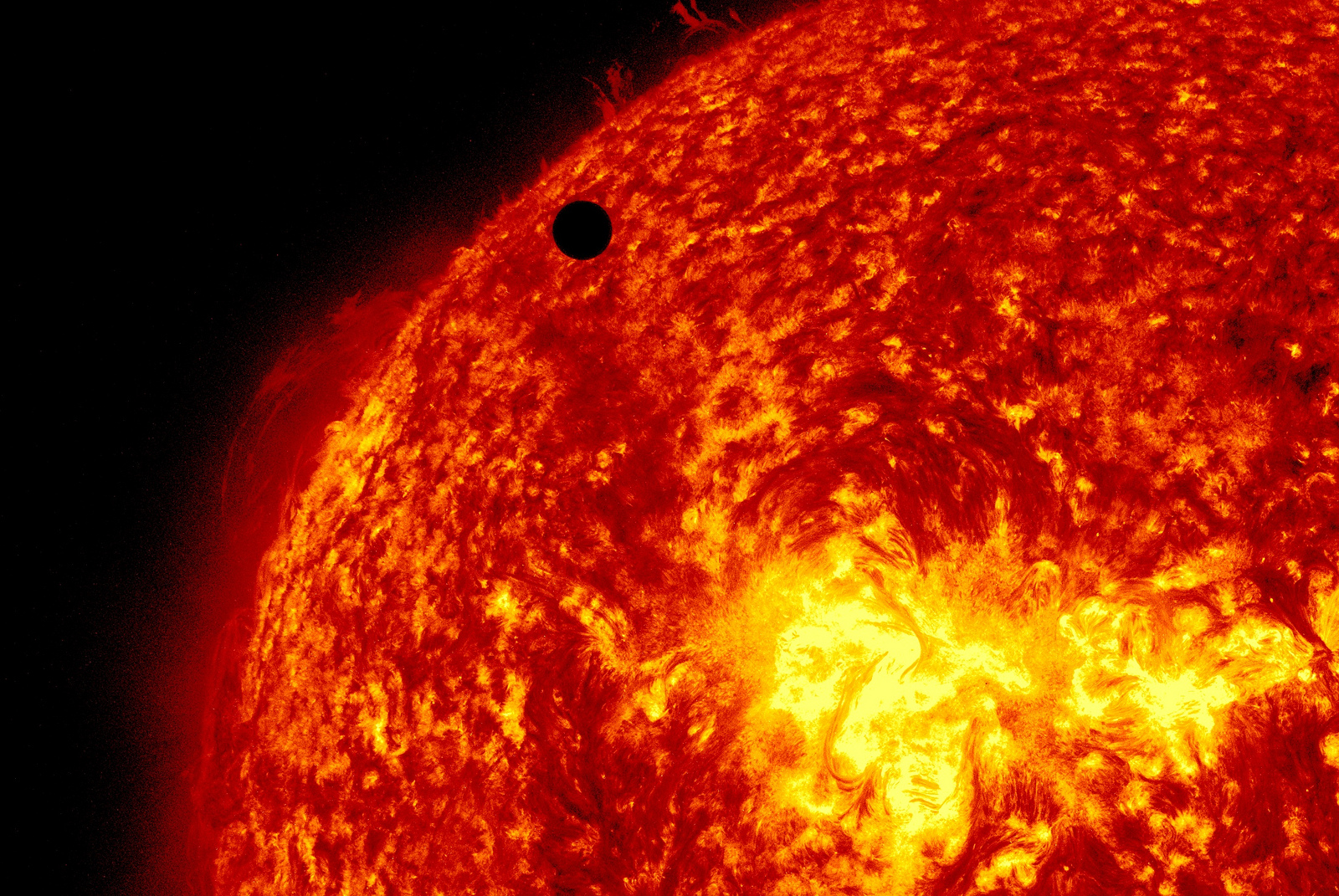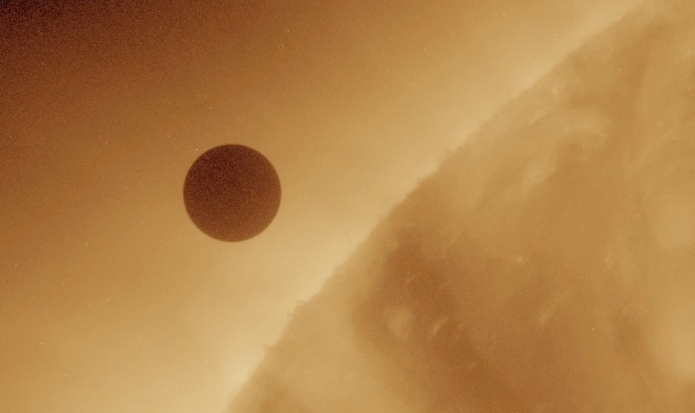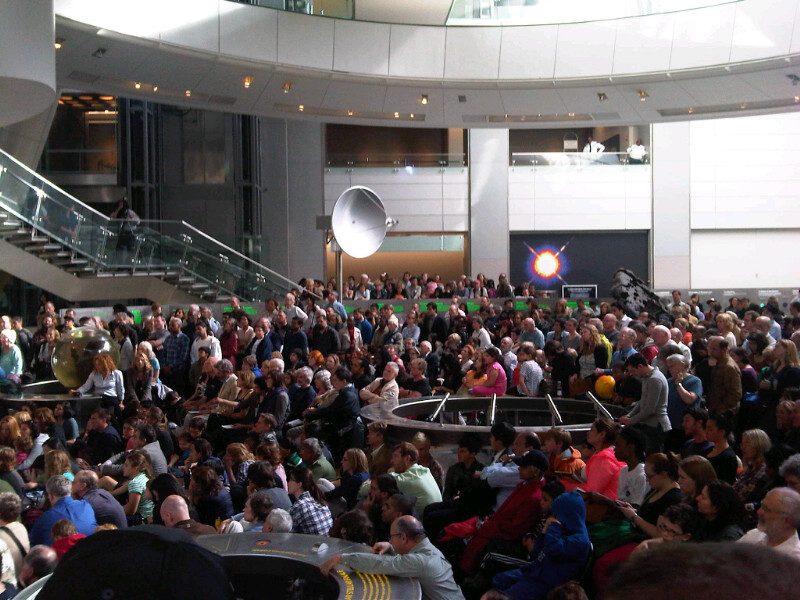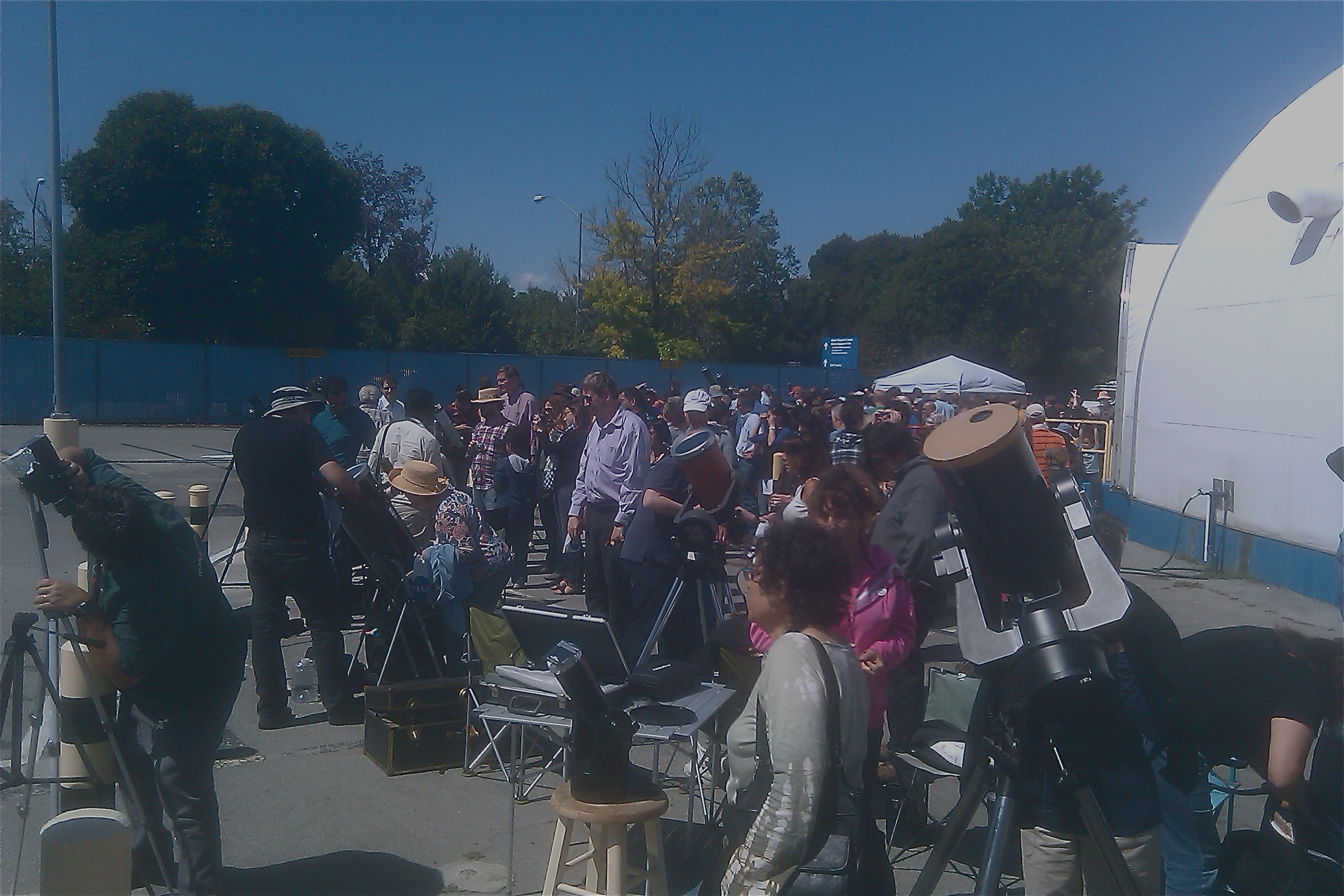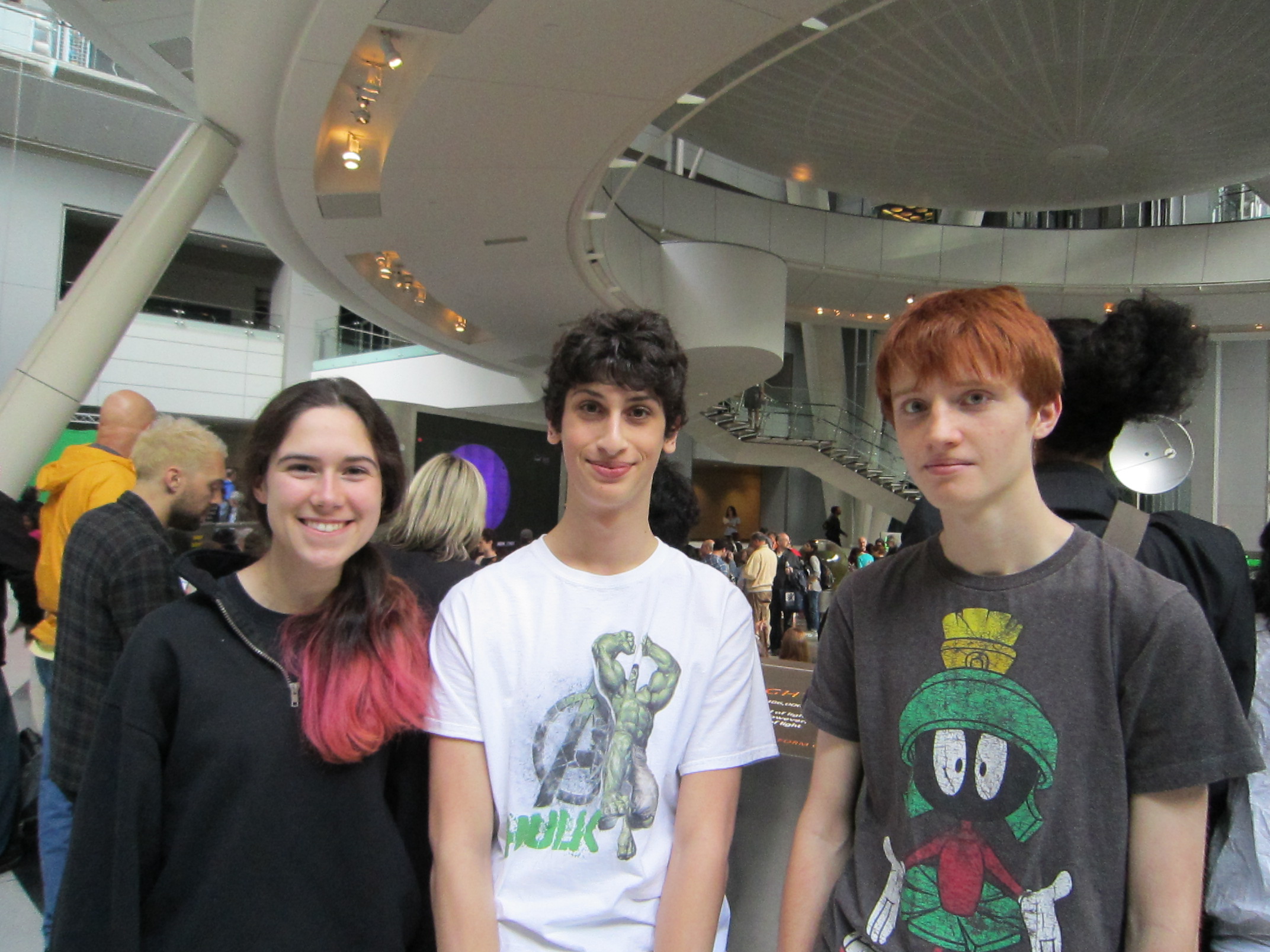Venus Crosses the Sun for Last Time Until 2117, Skywatchers Rejoice

NEW YORK – It's something no one alive today will likely ever see again: The planet Venus crossing the sun — a small, black dot moving across the fiery face of our nearest star.
The transit of Venus across the sun is one of the rarest celestial sights visible from Earth, one that wowed scientists and amateur observers around the world Tuesday (June 5). The event, arguably the most anticipated skywatching display of the year, marked the last time Venus will cross the sun (as seen from Earth) for 105 years.
Only seven Venus transits have been witnessed since the invention of the telescope 400 years ago, and you'd have a long wait for the next one. It won't happen again until Dec. 11, 2117.
To celebrate the last transit of Venus in the 21st century, astronomers and skywatchers came together in many sites around the world. In the United States, NASA beamed images of the transit from an observatory atop Mauna Kea in Hawaii (just one of many webcasts from many countries) and welcomed the public to its various space centers, including the Ames Research Center in Moffett Field, Calif. [Amazing Venus Transit 2012 Pictures]
"It's truly inspiring to see so many faces here to share this moment with us," Natalie Batalha, the deputy science team leader of NASA's planet-hunting Kepler space telescope, told visitors at Ames. "It's going to give you, I hope, a profound feeling of the grandeur of our own solar system. You're going to see Venus in person, with a spotlight shining on her."
Tuesday's transit began just after 6 p.m. EDT (2200 GMT) and lasted about six hours and 40 minutes. It was visible across North America, Europe, Asia and eastern Africa. Because of the International Date Line, some parts of the world saw the transit on June 6.
A rare celestial sight
Breaking space news, the latest updates on rocket launches, skywatching events and more!
Venus transits occur when Venus reaches a point in its orbit that brings the planet directly between the Earth and the sun. Since the tilt of Venus' orbit isn't exactly the same as that of Earth, the events are rare, occurring just four times every 243 years.
The transits occur in pairs eight years apart. Since the June 5 transit followed a previous Venus sun crossing in 2004, this is the last one of the current cycle. Venus and Mercury are the only planets that can be seen crossing the sun from Earth since their orbits are between our planet and the sun. The next Mercury transit will be on May 9, 2016.
Despite the extreme rarity of Venus transits, they hold a wealth of information about Venus, the sun and our solar system. Since the first documented observation of a Venus transit in 1639, astronomers have used the events to measure the size of the solar system, the intricacies of Venus' atmosphere, the width of the sun and more. [Venus Crosses Sun's Hellfire in 2012 Transit (Video)]
In fact, NASA and other space agencies trained a fleet of satellites to watch the Venus transit in unprecedented detail. NASA's powerful Solar Dynamics Observatory captured spectacular photos and movies of the entire transit.
Astronomers and skywatchers were eagerly looking forward to seeing the so-called "Black Drop Effect," an optical illusion that occurs when just after Venus moves on to the sun's disk and just before it exits. During the illusion, the black disk of Venus appears to be connected to the edge of the sun due to a trick of optics, NASA officials said.
Even astronauts in space caught Venus transit fever.
NASA astronaut Don Pettit photographed the Venus transit from the observation deck of the International Space Station. He is the first person ever to photograph the transit from space and has been a prolific photographer of Earth and space during his months-long mission aboard the space station.
"For scientific purposes today, the transit of Venus is more of an educational opportunity to look at celestial events and learn and be delighted about how our solar systems, and the dynamics of the planets, operate," Pettit said in a video before the transit.
Venus-watching in the Big Apple
Here in New York City, hundreds of skywatchers flocked to Manhattan's west side where the Amateur Astronomers Association of New York set up two separate observing posts to catch the historic Venus transit. Clouds and occasional rain put a damper on the viewing, but for brief moments the skies parted allowing for amazing views.
Megan McDavid, of Brooklyn, said she came out to see the transit because: "It's a once-in-a-lifetime opportunity. This is my last chance, how could you miss it?"
She admitted that the small dot of Venus was "hard to see" without telescope magnification, but said, "I feel lucky we got a few breaks in the clouds and I got a chance to see it."
Elsewhere in Manhattan, nearly 600 people packed the American Museum of Natural History to watch Venus cross the sun. The museum carried NASA's webcast from Mauna Kea live, with the crowd cheering as the event began.
"We watched a dot move across the screen and it was awesome," said skywatching enthusiast Kip Daly, 16, when asked what he'd tell his future children about the transit.
Back in Moffett Field, Calif., people turned out in droves to view the last-in-a-lifetime Venus transit at NASA's Ames Research Center about 40 miles (64 kilometers) south of San Francisco. [Skywatchers Pictures of 2012 Venus Transit]
Ames' Batalha kicked things off with a standing-room-only talk at 2:30 p.m. local time (5:30 p.m. EDT; 2130 GMT), about 30 minutes before the transit began.
As hundreds of people listened inside Ames' Exploration Center, Batalha explained why planetary transits intrigued astronomers over the centuries— and why they're still important today. NASA's Kepler space telescope uses transits to detect alien worlds, for example, flagging the tiny brightness dips caused when exoplanets cross their stars from the telescope's perspective.
When Batalha finished, the focus shifted to the live NASA webcast of the transit, which began playing on the Exploration Center's huge screen.
Moans and murmurs ran through the crowd when the feed was lost around 3 p.m. PT, just as Venus was getting set to touch the solar disk for the first time. But an appreciative and reverent silence set in when the video was restored and Venus appeared on the sun's limb.
The crowds were big outside in the parking lot, too, where several dozen amateur astronomers had set up specially filtered telescopes and binoculars. It was a perfect day for viewing, sunny and clear, and hundreds of onlookers queued up to see the spectacular sky show.
One such skywatcher was 6-year-old Natalie Buckley, who came to the event with her family. Natalie said she saw Venus and sunspots through the various telescopes, an experience she described as "cool and weird."
Most of the attendees were doubtless locals, drawn to Ames from various spots around the Bay Area. But two hardcore skywatchers came all the way from Spain.
Oscar Martin Mesonero and Pablo Gonzalez Pena are from Salamanca, which missed the entire seven-hour transit. The two came to California because they could see most of the transit from here, and because they figured the weather would cooperate.
"I'm an eclipse chaser," Martin Mesonero said, adding that he's planning to go to Australia to view a total solar eclipse this November.
He saw the 2004 Venus transit in Spain, but with relatively rudimentary equipment. He and Gonzalez Pena brought a bunch of high-tech, high-performance gear to California with them to document this transit, the last one they'll ever see.
"This is the first time I've taken good pictures and good video," Martin Mesonero said.
Back in New York, younger Venus observers were ecstatic as well.
Lauren Aldorody, 17, said there was just something extra special about watching Venus pass in front of the sun that sets it apart from other celestial events.
"This is probably the top," Aldorody said. "I haven't really seen much, just a few lunar eclipses, but this is way cooler."
SPACE.com assistant managing editor Clara Moskowitz and staff writer Denise Chow contributed to this report from New York. Senior writer Mike Wall contributed from San Francisco.
You can follow SPACE.com Managing Editor Tariq Malik on Twitter @tariqjmalik. Follow SPACE.com for the latest in space science and exploration news on Twitter @Spacedotcom. We're also on Facebookand Google+.

Tariq is the award-winning Editor-in-Chief of Space.com and joined the team in 2001. He covers human spaceflight, as well as skywatching and entertainment. He became Space.com's Editor-in-Chief in 2019. Before joining Space.com, Tariq was a staff reporter for The Los Angeles Times covering education and city beats in La Habra, Fullerton and Huntington Beach. He's a recipient of the 2022 Harry Kolcum Award for excellence in space reporting and the 2025 Space Pioneer Award from the National Space Society. He is an Eagle Scout and Space Camp alum with journalism degrees from the USC and NYU. You can find Tariq at Space.com and as the co-host to the This Week In Space podcast on the TWiT network. To see his latest project, you can follow Tariq on Twitter @tariqjmalik.
